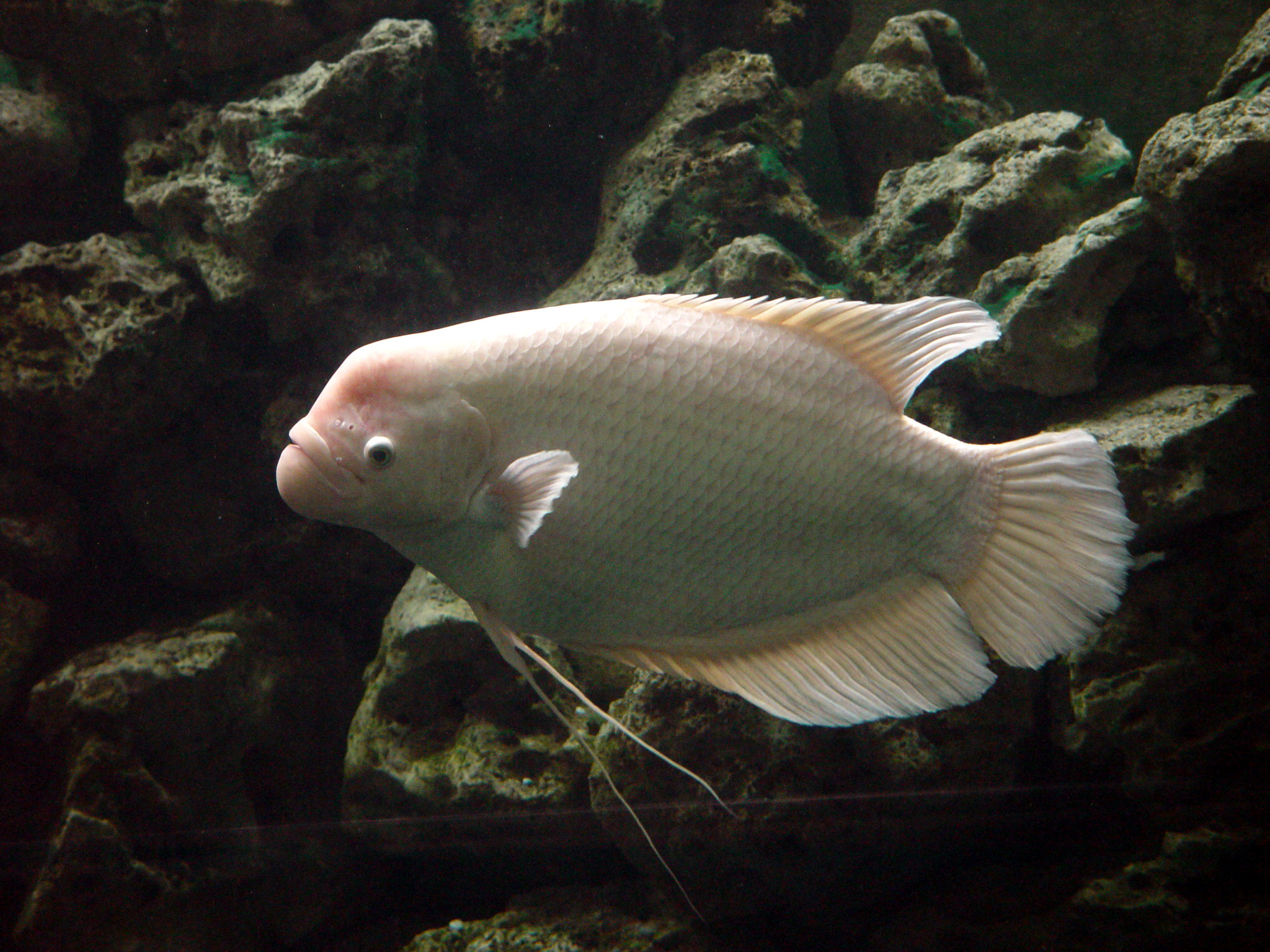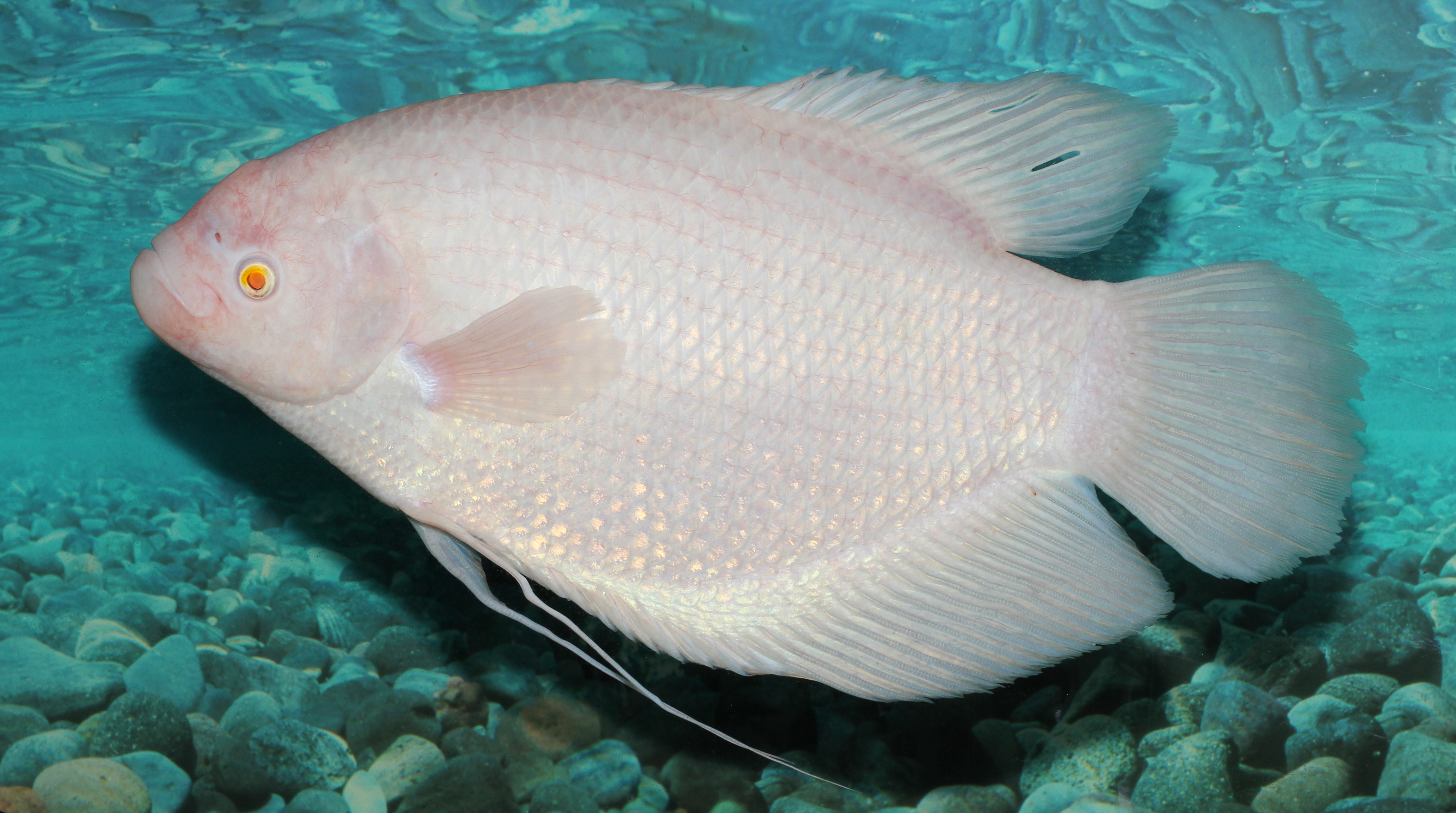|
Osphronemus
''Osphronemus'' is a genus of large gouramis, the only genus within the subfamily Osphroneminae. These fish are known as the giant gouramis and are native to rivers, lakes, pools, swamps and floodplains in Southeast Asia, with ''O. exodon'' from the Mekong basin, ''O. laticlavius'' and ''O. septemfasciatus'' from Borneo, while ''O. goramy'' is relatively widespread.Roberts, T.R. (1992). Systematic revision of the Southeast Asian anabantoid fish genus Osphronemus, with descriptions of two new species. Ichthyol. Explor. Freshwat. 2(4):351–360.Roberts, T.R. (1994). Osphronemus exodon, a new species of giant gourami with extraordinary dentition from the Mekong. Natural History Bulletin of the Siam Society 42(1): 67–77. ''O. goramy'' has been introduced outside its native range in Asia, Africa and Australia.Roberts, T.R. (1989). "The freshwater fishes of Western Borneo (Kalimantan Barat, Indonesia)". Memoirs of the California Academy of Sciences. 14: 1–210. All the species are ... [...More Info...] [...Related Items...] OR: [Wikipedia] [Google] [Baidu] |
Osphronemus Goramy
The giant gourami (''Osphronemus goramy'') is a species of large gourami native to freshwater habitats in Southeast Asia. It has also been introduced elsewhere. The species is commercially important as a food fish and is also farmed. It can be found in the aquarium trade, as well. The species has been used for weed control on highly invasive aquatic plants like ''Salvinia molesta'', as the giant gourami can be a voracious herbivore. It is capable of breathing moist air, so can survive out of water for long periods. It is much larger than most gouramis (only the other ''Osphronemus'' species reach a similar size), growing to a maximum standard length of , though most are only around . Distribution and habitat The giant gourami is native to rivers, streams, marshes, swamps and lakes in Southeast Asia, from the lower Mekong of Cambodia and Vietnam, and Chao Phraya and Mae Klong of Thailand, as well as river basins in the Malay Peninsula, Sarawak of Malaysia, and Java, to Sumat ... [...More Info...] [...Related Items...] OR: [Wikipedia] [Google] [Baidu] |
Osphronemus Laticlavius
The giant red tail gourami (''Osphronemus laticlavius'') is a large species of gourami belonging to the family Osphronemidae. It is native to the Southeast Asian island of Borneo, where only known from the Kinabatangan and Segama river basins in Sabah, East Malaysia, and Indonesia.Roberts, T.R. (1992). Systematic revision of the Southeast Asian anabantoid fish genus Osphronemus, with descriptions of two new species. Ichthyol. Explor. Freshwat. 2(4):351–360.Roberts, T.R. (1994). Osphronemus exodon, a new species of giant gourami with extraordinary dentition from the Mekong. Natural History Bulletin of the Siam Society 42(1): 67–77. First described in 1992 based on an aquarium specimen. The giant red tail gourami is not common; in a study of the Segama River that covered eight years only a few were caught, and it may already have disappeared from the lower Kinabatangan River. It is replaced in Brunei, Sarawak, and North, East and West Kalimantan by the closely related '' O. ... [...More Info...] [...Related Items...] OR: [Wikipedia] [Google] [Baidu] |
Osphronemus Exodon
The elephant ear gourami (''Osphronemus exodon'') is a large species of gourami native to the Mekong in Thailand, Laos, and Cambodia. Distribution and habitat In the wild, the elephant ear gourami is found in the Mekong river basin of Thailand, Laos, and Cambodia. It is only known for certain from the middle part of the basin, from Kampong Cham Province (central Cambodia) to Sainyabuli Province (northern Laos).Poulsen, A.F., and Valbo-Jørgensen, J. (2000). Fish Migrations and Spawning Habits in the Mekong Mainstream - A Survey using Local Knowledge. AMFC Technical Report. Mekong River Commission, Phnom Penh, Cambodia. The closely related giant gourami (''O. goramy'') has been reported from the same section, but these records are likely misidentifications of elephant ear gouramis.Rainboth, W.J. (1996). Fishes of the Cambodian Mekong, p. 218. FAO, United Nations. .Roberts, T.R. (1994). Osphronemus exodon, a new species of giant gourami with extraordinary dentition from the Me ... [...More Info...] [...Related Items...] OR: [Wikipedia] [Google] [Baidu] |
Osphronemus Septemfasciatus
''Osphronemus septemfasciatus'' is a species of freshwater ray-finned fish from the gourami family Osphronemidae. It is found in large slow-flowing rivers where it prefers the main channels, although juveniles occur in tributaries. It is endemic to the island of Borneo where it is found in Sarawak, Brunei Darussalam, Kalimantan Barat, Kalimantan Timur and Kalimantan Utara. The species reaches 50 cm (19.7 inches) in standard length Fish measurement is the measuring of individual fish and various parts of their anatomies. These data are used in many areas of ichthyology, including taxonomy and fisheries biology. Overall length * Standard length (SL) is the length of a fish ... and is known to be an obligate air-breather. References septemfasciatus Fish described in 1992 {{Anabantiformes-stub ... [...More Info...] [...Related Items...] OR: [Wikipedia] [Google] [Baidu] |
Gouramis
Gouramis, or gouramies , are a group of freshwater anabantiform fishes that comprise the family Osphronemidae. The fish are native to Asia—from the Indian Subcontinent to Southeast Asia and northeasterly towards Korea. The name "gourami", of Indonesian origin, is also used for fish of the families Helostomatidae and Anabantidae. Many gouramis have an elongated, feeler-like ray at the front of each of their pelvic fins. All living species show parental care until fry are free swimming: some are mouthbrooders, like the Krabi mouth-brooding betta (''Betta Simplex''), and others, like the Siamese fighting fish (''Betta splendens''), build bubble nests. Currently, about 133 species are recognised, placed in four subfamilies and about 15 genera. The name Polyacanthidae has also been used for this family. Some fish now classified as gouramis were previously placed in family Anabantidae. The subfamily Belontiinae was recently demoted from the family Belontiidae. As labyrinth f ... [...More Info...] [...Related Items...] OR: [Wikipedia] [Google] [Baidu] |
Freshwater Fish Genera
Fresh water or freshwater is any naturally occurring liquid or frozen water containing low concentrations of dissolved salts and other total dissolved solids. Although the term specifically excludes seawater and brackish water, it does include non- salty mineral-rich waters such as chalybeate springs. Fresh water may encompass frozen and meltwater in ice sheets, ice caps, glaciers, snowfields and icebergs, natural precipitations such as rainfall, snowfall, hail/ sleet and graupel, and surface runoffs that form inland bodies of water such as wetlands, ponds, lakes, rivers, streams, as well as groundwater contained in aquifers, subterranean rivers and lakes. Fresh water is the water resource that is of the most and immediate use to humans. Water is critical to the survival of all living organisms. Many organisms can thrive on salt water, but the great majority of higher plants and most insects, amphibians, reptiles, mammals and birds need fresh water to survive. Fresh ... [...More Info...] [...Related Items...] OR: [Wikipedia] [Google] [Baidu] |
Tyson R
Tyson is a male given name of old French origin meaning 'high-spirited', 'fire'. It is from this that a surname arose 'son of Tyson'. Surname *Alan Tyson (1926–2000), British musicologist * Barbara Tyson (born 1964), Canadian actress * Bill Tyson, Irish writer and producer * Cathy Tyson (born 1965), British actress * Charles Tyson (1885–1964), English footballer * Cicely Tyson (1924–2021), American actress * Donald J. Tyson (1930–2011), American business executive and billionaire * Edward Tyson (1650–1708), English scientist and physician * Frank Tyson (born 1930), English cricketer * Ian Tyson (born 1933), Canadian musician * Isaac Tyson (1792–1861), American mining industrialist * Jacob Tyson (1773–1848), American politician * James Tyson (1819–1898), Australian pastoralist * J. Anthony Tyson (born 1940), American physicist and astronomer *John M. Tyson (born 1953), American judge * June Tyson (1936–1992), American jazz singer * Keith Tyson (born 1969), British ... [...More Info...] [...Related Items...] OR: [Wikipedia] [Google] [Baidu] |
Flooded Forest
Freshwater swamp forests, or flooded forests, are forests which are inundated with freshwater, either permanently or seasonally. They normally occur along the lower reaches of rivers and around freshwater lakes. Freshwater swamp forests are found in a range of climate zones, from boreal through temperate and subtropical to tropical. In the Amazon Basin of Brazil, a seasonally flooded forest is known as a ''várzea'', and refers to a whitewater-inundated forest. ''Igapó'' refers to blackwater-inundated forest. Peat swamp forests are swamp forests where waterlogged soils prevent woody debris from fully decomposing, which over time creates a thick layer of acidic peat. Freshwater swamp forest ecoregions Afrotropic * Eastern Congolian swamp forests (Democratic Republic of the Congo) * Niger Delta swamp forests (Nigeria) * Western Congolian swamp forests (Republic of the Congo, Democratic Republic of the Congo). Australasia * Northern New Guinea lowland rain and freshwater ... [...More Info...] [...Related Items...] OR: [Wikipedia] [Google] [Baidu] |
Algae
Algae ( , ; : alga ) are any of a large and diverse group of photosynthetic, eukaryotic organisms. The name is an informal term for a polyphyletic grouping that includes species from multiple distinct clades. Included organisms range from unicellular microalgae, such as '' Chlorella'', '' Prototheca'' and the diatoms, to multicellular forms, such as the giant kelp, a large brown alga which may grow up to in length. Most are aquatic and lack many of the distinct cell and tissue types, such as stomata, xylem and phloem that are found in land plants. The largest and most complex marine algae are called seaweeds, while the most complex freshwater forms are the '' Charophyta'', a division of green algae which includes, for example, '' Spirogyra'' and stoneworts. Algae that are carried by water are plankton, specifically phytoplankton. Algae constitute a polyphyletic group since they do not include a common ancestor, and although their plastids seem to have a single ori ... [...More Info...] [...Related Items...] OR: [Wikipedia] [Google] [Baidu] |



